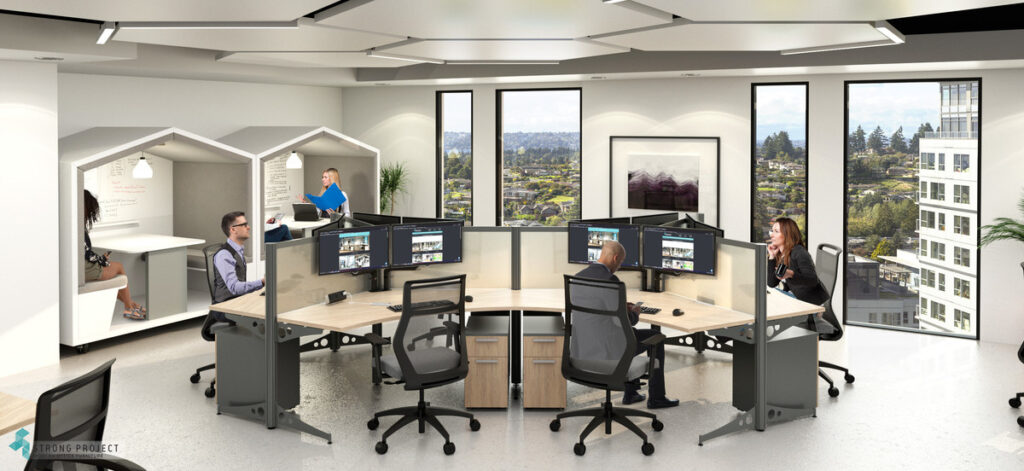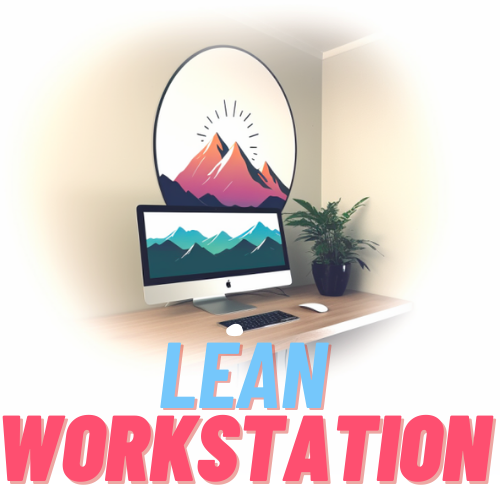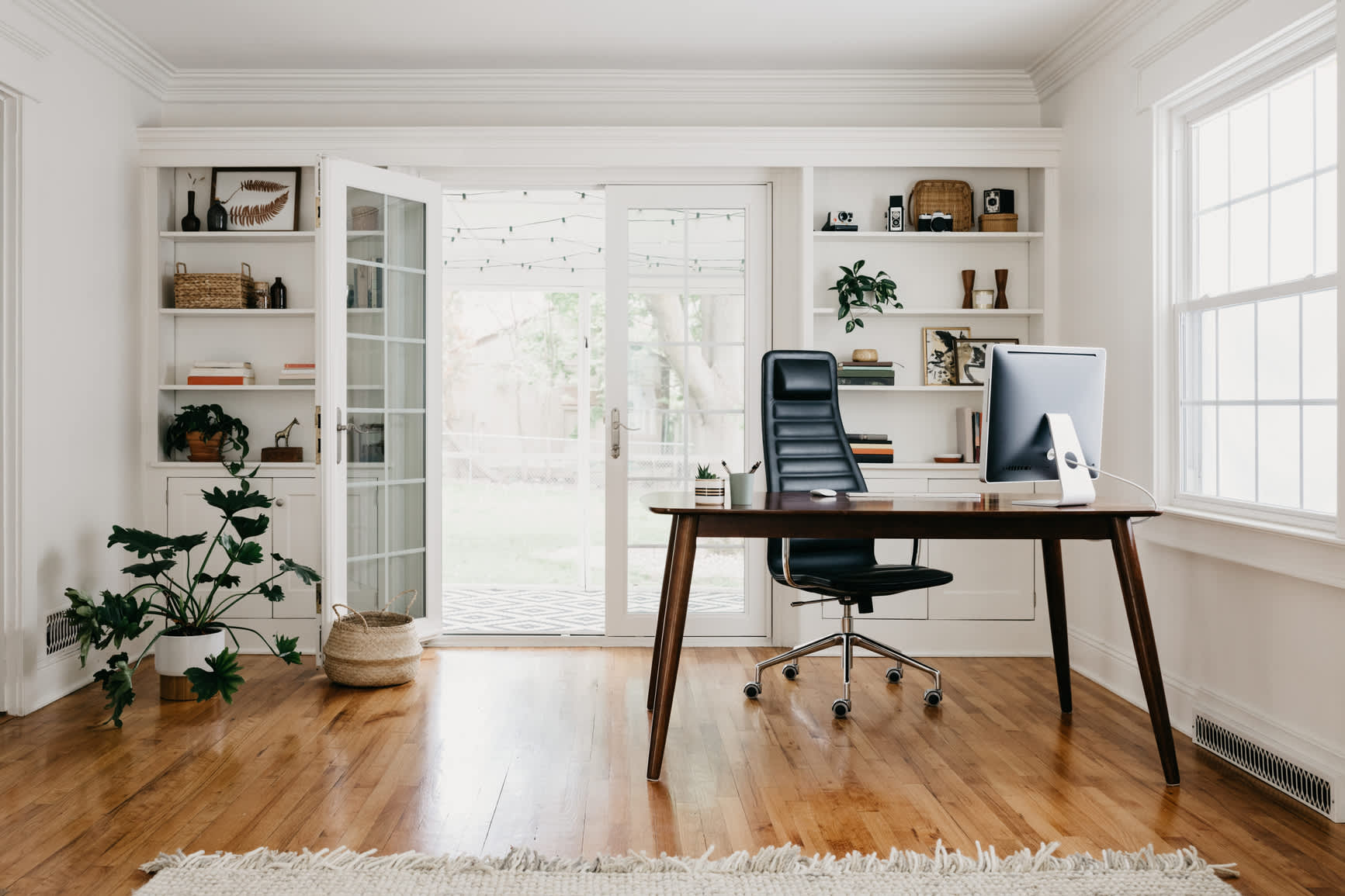
Are you looking to create a minimalist yet functional office space? Finding the right equipment can be a challenge, as you want to strike a balance between simplicity and practicality. In this article, we will explore some key factors to consider when choosing office equipment that will not only enhance your productivity but also blend seamlessly with your minimalist aesthetic. From desks to chairs to storage solutions, we’ve got you covered with tips and insights to help you create the perfect minimalist workspace.
Budget considerations
Determining your budget
When choosing office equipment, it is essential to determine your budget beforehand. Set a realistic budget that takes into account all the equipment you need for your office. Consider factors such as the size of your business, your financial resources, and the quality of equipment you require. By determining your budget in advance, you can narrow down your options and make informed decisions that align with your financial goals.
Researching prices of office equipment
Once you have determined your budget, it is important to research the prices of office equipment. Look for reputable suppliers and compare prices of different brands and models. Keep in mind that the cheapest option may not always be the best choice as it could compromise on quality and durability. Strike a balance between cost and quality to ensure that you are getting the most value for your money.
Considering long-term costs
When choosing office equipment, it is crucial to consider the long-term costs associated with maintenance, repairs, and upgrades. While certain equipment may have a higher upfront cost, they may also offer better quality and durability, reducing the need for frequent repairs or replacements. Additionally, consider the energy efficiency of the equipment, as opting for energy-saving options can significantly lower your long-term energy costs. By factoring in long-term costs, you can make a well-informed decision that saves you money in the long run.
Space requirements
Assessing available space
Before purchasing office equipment, assess the available space in your office. Measure the dimensions of the room and take note of any constraints, such as windows, doors, or existing furniture. This will help you determine the size and layout of the equipment that can comfortably fit in your office without causing any obstructions or hindering productivity.
Measuring dimensions of office equipment
When choosing office equipment, it is crucial to measure the dimensions of the equipment itself. Consider the height, width, and depth of each item to ensure compatibility with your office space. Take into account the space needed for proper ventilation and easy access for maintenance or repairs. By accurately measuring the dimensions, you can avoid purchasing equipment that is too large or too small for your office.
Considering ergonomics
Ergonomics plays a vital role in creating a functional and comfortable office environment. Choose office equipment that promotes good posture and reduces strain on the body. Look for adjustable chairs, desks, and monitor stands that can be customized to each employee’s needs. Invest in ergonomic accessories such as wrist rests, footrests, and keyboard trays to further enhance the comfort of your employees. By considering ergonomics, you can create a healthier and more productive workspace.
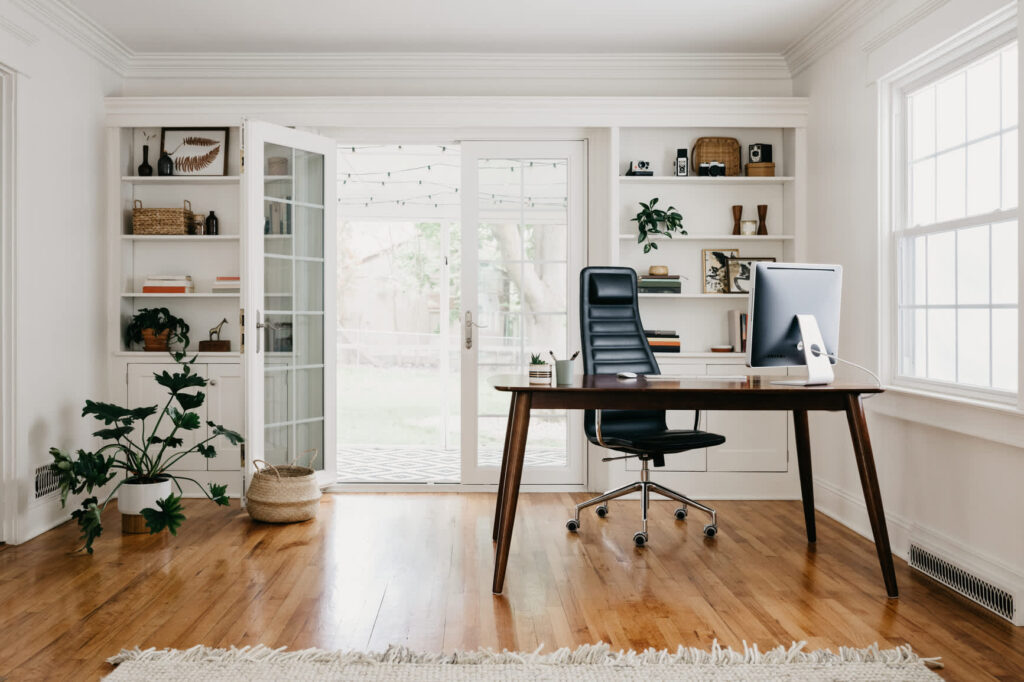
Functionality
Identifying essential office equipment
Before making any purchasing decisions, identify the essential office equipment that your business requires. This may include computers, printers, scanners, telephones, desks, chairs, and storage solutions. Prioritize the equipment that is crucial for daily operations, and consider the specific needs of your business. By identifying the essentials, you can ensure that you have the necessary equipment to carry out your work effectively.
Considering multi-functional options
When choosing office equipment, consider multi-functional options that can serve multiple purposes. For example, investing in a printer that can also scan and copy documents eliminates the need for separate devices, saving both space and money. Look for equipment that offers versatile features without compromising on quality. By opting for multi-functional options, you can streamline your office setup and increase efficiency.
Evaluating storage solutions
Storage is a crucial aspect of any office environment. Evaluate the storage solutions available and choose equipment that offers sufficient storage capacity for your needs. Look for desks with built-in drawers or shelves, file cabinets with ample space, and storage cabinets that can accommodate various office supplies. Additionally, consider the organization and accessibility of the storage solutions to ensure easy retrieval of documents and supplies. By evaluating storage options, you can maintain a clutter-free and organized workspace.
Quality and durability
Researching reputable brands
When it comes to office equipment, quality and durability are essential factors to consider. Research reputable brands that are known for producing reliable and long-lasting equipment. Read customer reviews, seek recommendations from other businesses, and check industry ratings to get an idea of the brand’s reputation. Investing in equipment from reputable brands ensures that you are purchasing reliable products that are built to last.
Reading customer reviews
To gain a better understanding of the quality and durability of office equipment, read customer reviews. Customers who have already purchased and used the equipment can provide valuable insights into its performance and reliability. Look for reviews that specifically mention the durability and longevity of the product, as these factors are crucial in determining its value. By reading customer reviews, you can make an informed decision based on the experiences of others.
Considering warranties
When choosing office equipment, consider the warranties offered by the manufacturers. A warranty provides an assurance that the equipment is of good quality and can be repaired or replaced if any issues arise. Look for manufacturers that offer comprehensive warranties, including coverage for parts and labor. Consider the length of the warranty and any additional warranty options available. By considering warranties, you can have peace of mind knowing that your investment is protected.

Aesthetic appeal
Understanding minimalist design principles
Minimalist design principles focus on simplicity, functionality, and cleanliness. Familiarize yourself with these principles and understand how they can be applied to office equipment. Look for equipment that has a sleek and understated design, without excessive ornamentation or unnecessary features. Minimalist design not only enhances the aesthetic appeal of your office but also promotes a clutter-free and focused work environment.
Choosing neutral colors and clean lines
When selecting office equipment, opt for neutral colors and clean lines. Neutral colors such as white, gray, or beige create a calm and professional atmosphere. Avoid loud or distracting colors that can hinder concentration and productivity. Additionally, choose equipment with clean lines and simple shapes, as these contribute to the overall minimalist aesthetic. By choosing neutral colors and clean lines, you can create a visually harmonious and cohesive office environment.
Considering the overall office decor
Consider the overall office decor when choosing office equipment. Ensure that the equipment aligns with the existing color scheme, furniture style, and overall atmosphere of the office. Harmonize the equipment with the surrounding environment to create a cohesive and visually appealing workspace. By considering the overall office decor, you can create a pleasant and inviting atmosphere for both employees and clients.
Energy efficiency
Looking for energy-saving certifications
Energy efficiency is not only environmentally friendly but also helps to reduce operating costs. Look for office equipment that has energy-saving certifications, such as ENERGY STAR. These certifications ensure that the equipment meets specific energy efficiency standards and can significantly lower your energy consumption. By choosing energy-saving equipment, you can contribute to a sustainable work environment and save money on utility bills.
Selecting office equipment with adjustable power settings
Choose office equipment that offers adjustable power settings. Look for features such as power-saving modes or timers that automatically turn off the equipment when not in use. Adjustable power settings allow you to tailor the equipment’s energy usage to your specific needs, thereby reducing the overall power consumption. By selecting office equipment with adjustable power settings, you can actively contribute to energy conservation.
Considering standby modes
Another energy-saving feature to consider is standby mode. Choose office equipment that has an efficient standby mode, where the equipment consumes minimal power when not actively in use. Standby mode allows for quick startup when needed while reducing the energy consumption during idle periods. By considering standby modes, you can further reduce energy waste and promote energy efficiency in your office.

Connectivity options
Assessing compatibility with existing devices
When choosing office equipment, assess its compatibility with your existing devices. Ensure that the equipment can seamlessly integrate with your computers, printers, and other devices. Consider the operating systems and connectivity options needed to establish a reliable and efficient workflow. By assessing compatibility, you can avoid compatibility issues and minimize the need for additional adapters or software.
Considering wireless connectivity
Wireless connectivity is increasingly important in the modern office environment. Look for office equipment that offers wireless connectivity options such as Wi-Fi or Bluetooth. Wireless connectivity allows for greater flexibility and mobility, enabling employees to connect and collaborate seamlessly. Consider the range and stability of the wireless connectivity to ensure uninterrupted productivity. By considering wireless connectivity, you can create a more efficient and productive work environment.
Evaluating USB and other port options
Evaluate the USB and other port options available on office equipment. Ensure that the equipment has sufficient ports to connect all necessary devices, such as printers, scanners, and external storage devices. Consider the type and quantity of ports needed, such as USB-A, USB-C, HDMI, or Ethernet ports. By evaluating port options, you can ensure seamless connectivity and eliminate the need for additional hubs or adapters.
Productivity features
Choosing office equipment with quick setup options
Choose office equipment that offers quick setup options. Look for equipment that can be easily installed and configured without the need for specialized technical knowledge. Quick setup options allow you to start using the equipment immediately, minimizing downtime and maximizing productivity. Consider equipment with user-friendly interfaces and intuitive setup processes to ensure a smooth and hassle-free installation.
Considering automation and time-saving features
Automation and time-saving features can significantly enhance productivity in the office. Look for equipment that offers automation capabilities, such as automatic document feeders in printers or scanners. Consider features like duplex printing, automatic paper feeding, or preset print settings that can save time and effort. By considering automation and time-saving features, you can optimize efficiency and streamline workflow processes.
Evaluating productivity software compatibility
Evaluate the compatibility of office equipment with productivity software. Consider the software programs commonly used in your industry and ensure that the equipment can integrate seamlessly with them. Look for equipment that offers compatibility with popular software suites such as Microsoft Office or Adobe Creative Cloud. By evaluating productivity software compatibility, you can leverage the full potential of your office equipment and enhance collaboration and productivity.
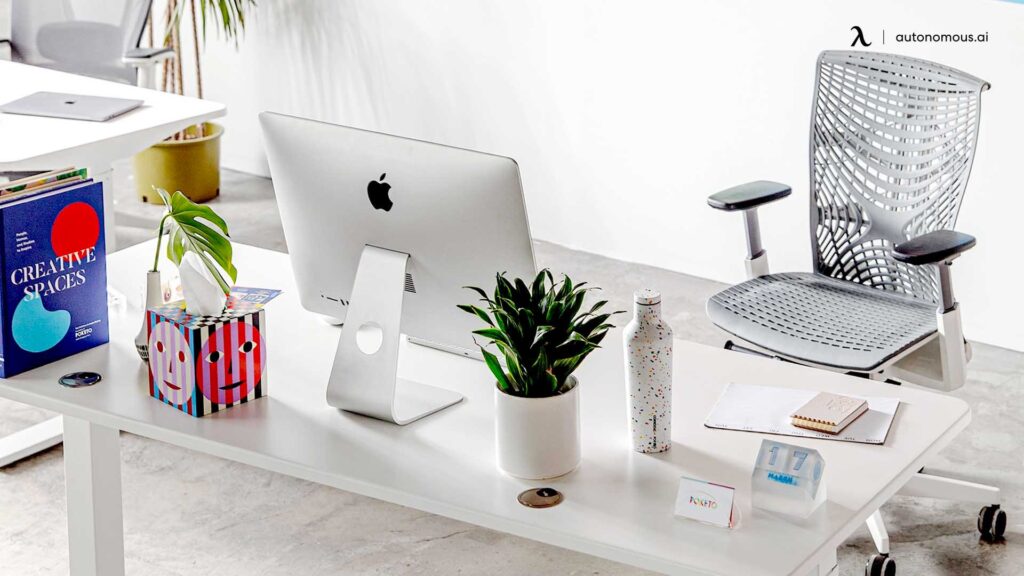
Noise levels
Considering the noise output of office equipment
Noise levels can significantly impact the comfort and productivity of employees. When choosing office equipment, consider the noise output of each item. Look for equipment that operates quietly and does not create unnecessary distractions. Avoid equipment with loud or constant noise as it can hinder concentration and communication in the office. Consider the noise levels of equipment, especially for open office spaces or areas where multiple employees work in close proximity.
Evaluating options with noise reduction technology
To minimize noise levels in the office, evaluate options with noise reduction technology. Many manufacturers incorporate noise reduction features in their equipment to ensure a quieter operation. Look for equipment that has soundproofing insulation or vibration-reducing mechanisms. By choosing options with noise reduction technology, you can create a peaceful and conducive work environment.
Choosing equipment with quiet operation
Finally, choose office equipment that has quiet operation as a primary feature. Look for equipment specifically designed to operate silently or with minimal noise. Consider features such as low decibel ratings or noiseless operation modes. By choosing equipment with quiet operation, you can promote a calm and focused work environment where employees can concentrate without unnecessary distractions.
Maintenance and support
Researching maintenance requirements
Before purchasing office equipment, research the maintenance requirements of each item. Consider factors such as cleaning, servicing, and regular maintenance needs. Look for equipment that is easy to clean and maintain to ensure optimal performance and longevity. Consider the availability and cost of replacement parts or consumables to avoid any unexpected expenses. By researching maintenance requirements, you can plan and budget for ongoing maintenance needs effectively.
Ensuring easy access to technical support
Technical support is crucial in the event of equipment malfunctions or issues. Ensure that the manufacturer or supplier offers reliable and easily accessible technical support. Look for options that provide multiple channels of support, such as phone, email, or live chat. Consider their response time and availability to efficiently resolve any technical problems that may arise. By ensuring easy access to technical support, you can minimize downtime and maintain productivity.
Checking availability of spare parts
When choosing office equipment, check the availability of spare parts. Consider the manufacturer’s reputation for providing spare parts and the cost associated with replacements. Ensure that spare parts are readily available and can be easily obtained when needed. By checking the availability of spare parts, you can avoid potential delays or disruptions caused by the unavailability of essential components.
In conclusion, choosing minimalist but functional office equipment requires careful consideration of various factors. By determining your budget, researching prices, and considering long-term costs, you can make informed decisions that align with your financial goals. Assessing available space, measuring dimensions, and considering ergonomics ensure that the equipment is suitable for your office environment. Prioritizing essential equipment, considering multi-functional options, and evaluating storage solutions contribute to functionality and efficiency. Researching reputable brands, reading customer reviews, and considering warranties ensure quality and durability. Understanding minimalist design principles, choosing neutral colors, and considering the overall office decor enhance aesthetic appeal. Looking for energy-saving certifications, selecting adjustable power settings, and considering standby modes promote energy efficiency. Assessing compatibility, considering wireless connectivity, and evaluating port options cater to connectivity needs. Choosing office equipment with quick setup options, considering automation and time-saving features, and evaluating productivity software compatibility enhance productivity. Considering noise levels, evaluating options with noise reduction technology, and choosing equipment with quiet operation create a peaceful work environment. Researching maintenance requirements, ensuring easy access to technical support, and checking availability of spare parts facilitate efficient maintenance and support. By considering these factors and following the outlined guidelines, you can select minimalist, functional, and high-quality office equipment that meets your business needs and creates a productive work environment.
